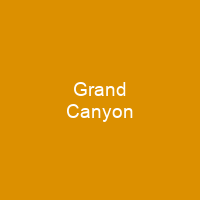The Grand Canyon: A Natural Wonder Unveiled
Imagine standing at the edge of a colossal chasm that stretches as far as the eye can see—this is the Grand Canyon. It’s not just a sight to behold; it’s a testament to nature’s grandeur and an intricate history etched in stone. The Grand Canyon, located in Arizona, USA, is a steep-sided canyon carved by the mighty Colorado River over millions of years. Its sheer size—277 miles long, up to 18 miles wide, and over a mile deep—is awe-inspiring.
But what lies beneath this majestic surface? The Grand Canyon isn’t just a visual spectacle; it’s a time capsule, revealing nearly two billion years of Earth’s geological history. Each layer of rock tells a story, from the Vishnu Schist at the bottom to the Kaibab Limestone on top. It’s like looking into a giant book of the planet’s past, with chapters spanning eons.
Now, let’s dive deeper into this natural wonder. The Colorado River has been cutting its channels through these layers for about 5-6 million years, but how did it all begin? Scientists have been studying the formation of the Grand Canyon and the Colorado River for over a century, yet the debate over its age continues. Some suggest that parts of the canyon reached near-modern depths around 20 million years ago, while others propose an even older timeline, with some segments potentially dating back to 70 million years.
The emerging scientific consensus is that the central segments were formed between 50-70 million years ago, while the eastern segment was cut about 15-25 million years ago. The westernmost and marble canyons were carved in the last five to six million years. This timeline paints a picture of a dynamic landscape, constantly evolving over millions of years.
But how does water shape such a vast expanse? The Colorado River’s flow has been influenced by weather conditions, particularly during ice ages when more water was available. This increased erosion rate helped cut through the rock faster and deeper, creating the canyon we see today. The base level and course of the river have also changed over time, with significant shifts occurring around 5.3 million years ago.
Geologic exposures in the Grand Canyon range from two billion-year-old Vishnu Schist at the bottom to 270-million-year-old Kaibab Limestone on the rim. This vast timeline is punctuated by a gap between 1.75 and 1.25 billion years ago, where no deposits are present. The Grand Canyon Supergroup was formed between 1.25 and 730 million years ago, with many formations deposited in warm shallow seas, near-shore environments, and swamps as the seashore advanced and retreated over a proto-North America.
As we explore further, we find that uplift of the Colorado Plateau starting about 65 million years ago attributed to the Laramide orogeny increased the depth and height of the Grand Canyon. Weather conditions during ice ages also played a crucial role in increasing water flow, cutting through rock faster and deeper.
Now, let’s take a step back in time to when humans first inhabited this area. The Ancestral Puebloans emerged around 1200 BCE during the Basketmaker II Era and are believed to be ancestors of modern Pueblo peoples. Other distinct cultures like the Cohonina (500-1200 CE) and Sinagua (500-1425 CE) also left their mark on this land.
European arrival in the 16th century brought new settlers, including miners like John Hance and Louis Boucher ‘The Hermit.’ Spanish explorers visited for the first time in 1540, led by Captain García López de Cárdenas and his Hopi guides. American trappers and mountain men may have been the next Europeans to reach the canyon in 1826, followed by Jacob Hamblin, a Mormon missionary, who crossed the canyon in 1858.
John Wesley Powell set out on the first expedition down the canyon in 1869. His journey was fraught with danger, but he emerged as the first to use the term ‘Grand Canyon.’ Major Powell visited again in 1880 and was told that the Shivwits had mistakenly killed men they thought were prospectors. He chose to smoke a peace pipe with them.
The Grand Canyon became a national monument in 1908 and a national park in 1919, thanks to efforts by President Roosevelt who established the Grand Canyon Game Preserve in 1906 to reduce livestock grazing and eradicate predators. He also lobbied for the Antiquities Act, which led to the creation of national monuments.
Today, the Grand Canyon is a diverse ecosystem with over 90 mammal species, five life zones, and three desert types. The river corridor and tributaries are home to various insect species, spiders, scorpions, mollusks, reptiles, and mammals. The park’s diverse fauna includes midges, caddisflies, mayflies, black flies, mites, beetles, butterflies, moths, fire ants, numerous spider species, 11 aquatic and 26 terrestrial mollusk species, approximately 41 reptile species, and over 90 bird species.
As we stand at the edge of this natural wonder, it’s hard not to be humbled by its sheer magnitude. The Grand Canyon is more than just a tourist attraction; it’s a living, breathing testament to Earth’s history and resilience. It challenges us to think about our place in nature and the delicate balance that sustains life on this planet.
The Grand Canyon is a natural wonder that continues to captivate visitors from around the world. Its geological complexity, diverse ecosystems, and rich cultural heritage make it one of the most significant geographical features on Earth. As we continue to study and protect this incredible landscape, let us remember its importance not just as a tourist destination but as a symbol of our planet’s enduring beauty and mystery.

You want to know more about Grand Canyon?
This page is based on the article Grand Canyon published in Wikipedia (retrieved on December 25, 2024) and was automatically summarized using artificial intelligence.







